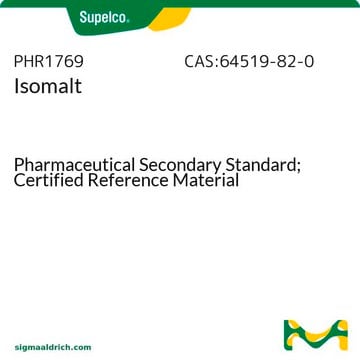613304
Chloroform solution
NMR reference standard, 2% in chloroform-d (99.8 atom % D), NMR tube size 3 mm × 8 in.
About This Item
Productos recomendados
grado
NMR reference standard
analytical standard
Nivel de calidad
concentración
2% in chloroform-d (99.8 atom % D)
técnicas
NMR: suitable
tubo de RMN tamaño
3 mm × 8 in.
aplicaciones
environmental
formato
single component solution
cadena SMILES
ClC(Cl)Cl
InChI
1S/CHCl3/c2-1(3)4/h1H
Clave InChI
HEDRZPFGACZZDS-UHFFFAOYSA-N
¿Está buscando productos similares? Visita Guía de comparación de productos
Características y beneficios
Cantidad
Palabra de señalización
Danger
Frases de peligro
Clasificaciones de peligro
Acute Tox. 3 Inhalation - Acute Tox. 4 Oral - Carc. 2 - Eye Irrit. 2 - Repr. 2 - Skin Irrit. 2 - STOT RE 1 Oral - STOT SE 3
Órganos de actuación
Central nervous system, Liver,Kidney
Código de clase de almacenamiento
6.1D - Non-combustible acute toxic Cat.3 / toxic hazardous materials or hazardous materials causing chronic effects
Clase de riesgo para el agua (WGK)
WGK 3
Punto de inflamabilidad (°F)
Not applicable
Punto de inflamabilidad (°C)
Not applicable
Equipo de protección personal
Eyeshields, Faceshields, Gloves
Elija entre una de las versiones más recientes:
Certificados de análisis (COA)
¿No ve la versión correcta?
Si necesita una versión concreta, puede buscar un certificado específico por el número de lote.
¿Ya tiene este producto?
Encuentre la documentación para los productos que ha comprado recientemente en la Biblioteca de documentos.
Nuestro equipo de científicos tiene experiencia en todas las áreas de investigación: Ciencias de la vida, Ciencia de los materiales, Síntesis química, Cromatografía, Analítica y muchas otras.
Póngase en contacto con el Servicio técnico








